HEALTH AND SAFETY
The processing of library materials for transfer to the Harvard Depository (HD) often involves the handling of items that are dusty and soiled. To minimize the impact of dust on people and on the overall office environment, please take the following precautions:
- Keep particle masks and cotton gloves generously stocked and use them, particularly if you are sensitive to dust. If you don’t wear gloves, wash your hands periodically over the course of the work session. Stock and wear smocks or aprons to protect clothing.
- Use only vacuum cleaners with HEPA filtration systems that prevent small particles, including mold spores, from being reintroduced into the air by vacuum exhaust. HEPA is an acronym for “high efficiency particulate air” filtration. (See appended list of supplies and equipment.)
- Isolate moldy materials in plastic bags and bring them to the attention of conservation staff. Wash hands or discard gloves immediately after bagging moldy materials.
CLEANING
Library materials are to be as dust-free as possible when they arrive at HD. It is best to clean materials when they enter the transfer workflow. There are two options for cleaning. Vacuuming is best because it is least likely to introduce dust back into the environment.
Vacuuming: We recommend a vacuum cleaner with both variable speed control so that suction can be adjusted, and with micro tools that facilitate thorough cleaning. HEPA filtration is absolutely essential. Hold the book firmly closed and vacuum along the top, from spine to fore edge (Fig. 1). The tops of books are usually the most dusty. Next, vacuum the fore edge and bottom edge of the volume. Clean remaining surfaces if needed.
|
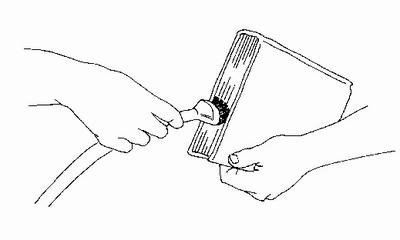 Fig. 1 |
Dusting: Use a cloth specially manufactured for effective dusting (see appended list of supplies and equipment). Pick up one book at a time. Hold the book firmly closed. Thoroughly dust the top of the textblock from spine to fore edge (Fig. 2). Then dust the remaining surfaces. Do not clean the edges of textblocks in cases where pages are crumbling. Replace the cloth when it becomes soiled. It can be laundered and reused repeatedly.
|
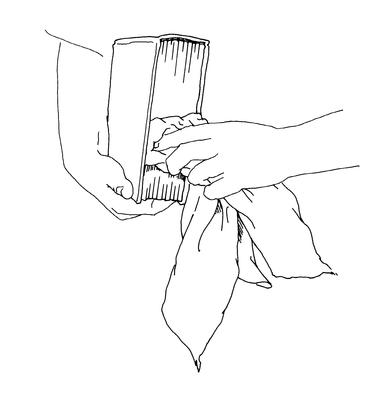 Fig. 2 |
If books are extremely dirty, vacuum them and then dust them by hand. Remember that the books will be integrated into a clean environment.
Remove all paper clips, rubber bands, sticky notes, and other inserts. To remove paper clips without damaging pages, bend them open rather than pulling them off. In general, damaged items will not be treated prior to transfer to HD. Exceptions are items with mold, live insects, or sticky accretions of gum or food. Set these materials aside in plastic bags and bring them to the attention of conservation staff.
SELECTING MATERIALS FOR SPECIAL HANDLING
Materials must be able to withstand transport to and from HD without damage. HD staff should be able to handle each item quickly and easily without risk of harming it. For materials with sound bindings or sturdy boxes this is not a problem, but for many items, some kind of protection is necessary.
Candidates for protective enclosures include books with:
- loose, detached, or missing covers or cases
- loose or detached pages
- crumbling or fracturing paper
- leather bindings that are powdery (this is known as “red rot”)
- vellum bindings
- volumes that create shelving problems such as odd size or warped covers
- volumes with clasps or other attachments that could damage adjacent material
- volumes with insect damage (HD requires that all items with insect damage be sent in an enclosure, even in cases where the damage is old)
Books that have artifactual value are also candidates for boxing when they need extra protection or cannot otherwise be barcoded without covering information.
Criteria for what constitutes “artifactual value” will vary from library to library depending upon a variety of circumstances. Possible criteria include date of publication, characteristics of the binding (vellum, gold-tooled leather, gold stamped cloth, decorated paper), rarity, and provenance. In some cases every item in a collection will require a protective enclosure.
All loose materials must be placed in an appropriate protective enclosure before being shipped to HD.
SELECTING THE APPROPRIATE PROTECTIVE ENCLOSURE FOR BOUND VOLUMES (INCLUDING PAMPHLETS)
For items needing protection, select the appropriate enclosure or wrapping based on size, condition, and value.
TYING
If the covers of a volume are loose or detached but the textblock is sound, tie up the volume with flat, 5/8”-wide cotton tape.
|
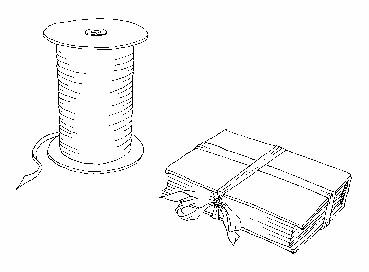 Fig. 3 |
Cut a piece of tape that is 4 times the length of the longest side of the volume plus two to four inches. Place the book on the tape and tie as illustrated (Figs. 4a – 4e). It is important that the bow be placed on the fore edge or top of the textblock so that it doesn’t interfere with shelving or take up additional space in the trays at HD.
|
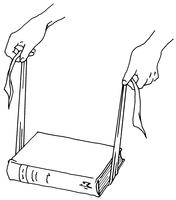 Fig. 4a |
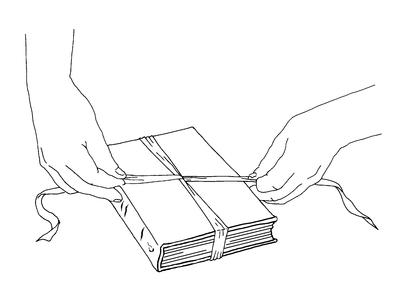 Fig. 4b |
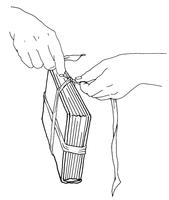 Fig. 4c |
|
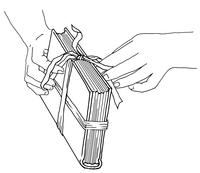 Fig. 4d |
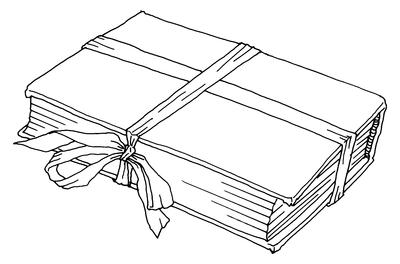 Fig. 4e |
ENCLOSURES
If the volume has powdery leather; loose, detached, or crumbling pages; or is otherwise at risk, it will need the protection of an envelope, wrapper, or box. Tying alone is not adequate.
Choose an enclosure that fits the volume as precisely as possible. A well-fitting enclosure will not waste space, and the volume is less likely to fall out or incur further damage. Enveloping is easiest but many items are too thick, heavy, or odd-shaped to be fitted within an envelope. Where an envelope will not do, the decision to wrap or box instead is typically based on cost. Wrapping is less expensive; boxes provide better protection.
Enveloping
Pamphlets are normally placed in sturdy alkaline/buffered paper envelopes. Select an envelope that is slightly larger than the pamphlet or pamphlets that will be stored in it. The envelope should be roomy enough so that the closure flap does not gape open when material is enclosed, and so that material can be removed easily for use. Multiple pamphlets may be placed in a single envelope only if they are linked to a single barcode.
If the item is fragile (e.g., a brittle pamphlet lacking any cover), enclose a piece of stiff alkaline/buffered card stock slightly smaller than the envelope and larger than the item (Fig. 5a). Another alternative is to enclose the fragile item in a sling (a folded sheet of alkaline/buffered paper) before putting it in an envelope (Fig. 5b). The sling should be slightly taller than the item it protects so that when reaching into an envelope, the reader grasps the sling rather than the fragile document. The fold of the sling should be at the bottom of the document, not along its side. Place the sling into the envelope fold side first. Thin, lightweight books less than 1” thick may also be placed in envelopes (Fig. 6). If the volume has detached covers, it may be necessary to tie it first.
|
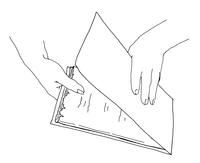 Fig. 5a |
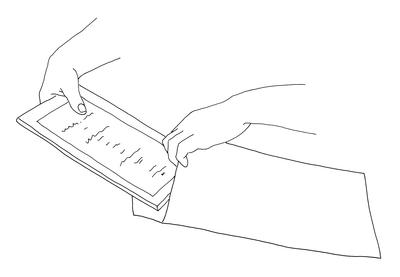 Fig. 5b |
Tyvek envelopes with gussets are suitable for items that are 1 to 2 inches thick.
Fold along the creases of the envelope, and fold the flaps over the body of the envelope. Tyvek is slippery so it is necessary to tie the package after closing the flaps, following directions 4a-e.
|
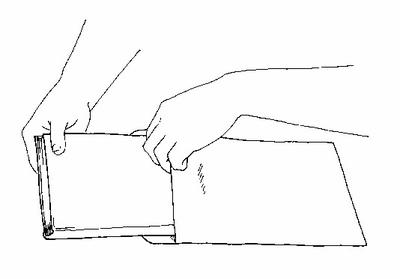 Fig. 6 |
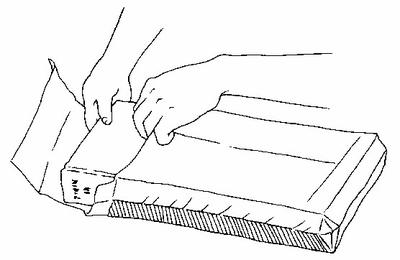 Fig. 7 |
Wrapping
Alkaline/buffered wrapping paper is used to protect items that do not fit into envelopes. Materials in this category include very tall or wide volumes and volumes more than 1” thick. Books are wrapped tightly, in the manner of wrapped presents, and tied with cloth tape. As in all tying, the bow should be placed at the fore edge or top of the text block. No pressure-sensitive tapes are used.
Wrapping paper should be 3 to 4” taller than the height of the book—and 3 times the width of the book plus 2 times the thickness plus 2 to 3”.
Place the paper even with the edge of the work surface.
Place the book face down on the paper with the spine at the edge of the paper (Fig 8a).
|
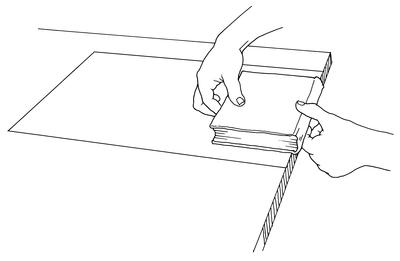 Fig. 8a |
Fold the paper around the fore edge of the front cover of the book (Fig. 8b). With the book on the table, make a crease with your hand (Fig. 8c).
|
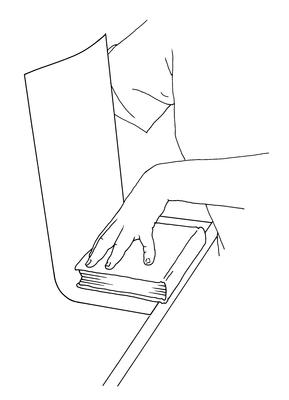 Fig. 8b |
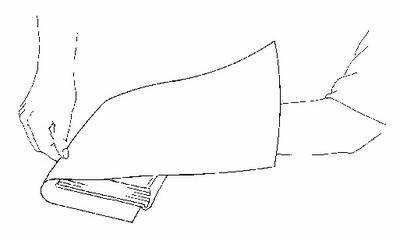 Fig. 8c |
Repeat the process along the fore edge of the back cover.
Next, open the sheet and sharpen creases with your hand, (Fig. 8d) then wrap the paper tightly around the spine (Fig. 8e).
|
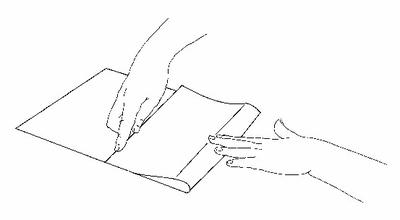 Fig. 8d |
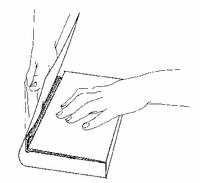 Fig. 8e |
If there is extra paper, continue to crease and fold it around the book. Open the sheet and set the creases with your hand as in Fig. 8d. Replace the sheet on the book (Fig. 8f) and fold in the edges (Fig. 8g).
|
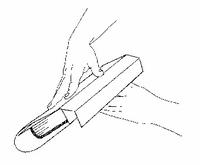 Fig. 8f |
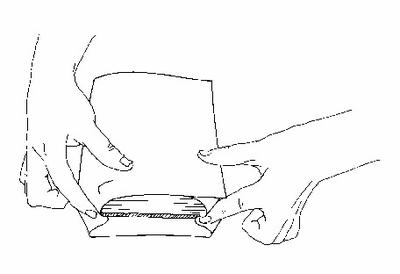 Fig. 8g |
Fold and crease the flaps at both the head and tail of the book, as in typical package wrapping (Figs. 8h and 8i).
|
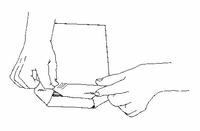 Fig. 8h |
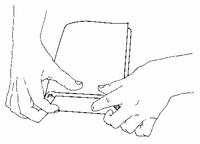 Fig. 8i |
Tie with 5/8”-wide cotton tape.
|
 Fig. 9a |
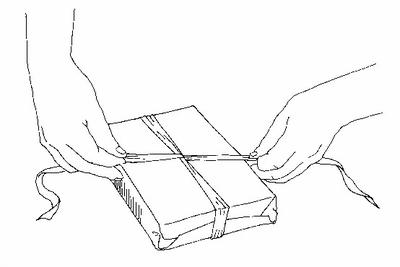 Fig. 9b |
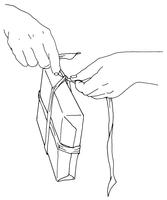 Fig. 9c |
|
 Fig. 9d |
 Fig. 9e |
Alternate wrapping method: If the wrapper extends well beyond the head and tail of the book, wrap the book as illustrated in Figs. 10a-c.
|
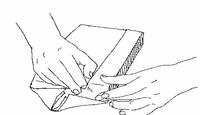 Fig. 10a |
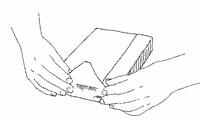 Fig. 10b |
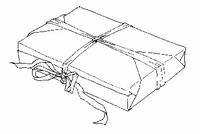 Fig. 10c |
BOXING
Phase boxes are reserved for items that are valuable and/or fragile, odd-sized, and require sturdy support. (It is more expensive to box than to wrap or tie.) Phase boxes may be ordered from a commercial library binder or made in-house.
|
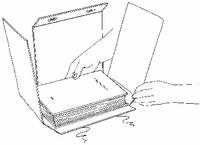 Fig. 11a |
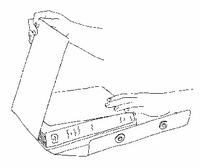 Fig. 11b |
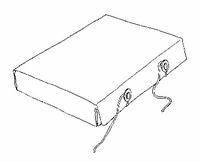 Fig. 11c |
Custom-size drop-spine boxes can also be ordered to size from a commercial vendor and are an acceptable alternative to phase boxes.
Document Cases, Record Storage Cartons and other standard archival boxes are suitable for groups of materials that are linked to a single barcode. Contents should be packed to fill the containers so that materials do not slump and become distorted.
|
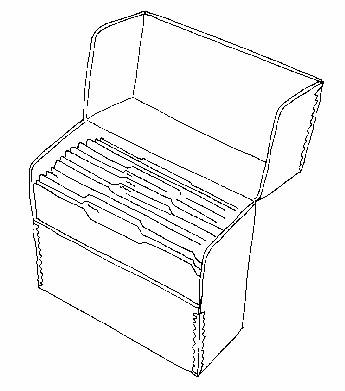 Fig. 12 |
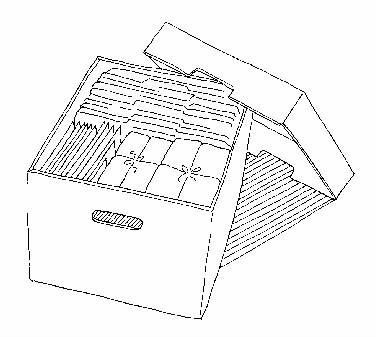 Fig. 13 |
SPECIAL HANDLING FOR UNBOUND MATERIALS
Most unbound materials (sheets of paper, loose issues of journals and newspapers) require protective enclosures. Select an appropriate strategy based upon the size, quantity, and condition of the material. Individual sheets or groups of sheets linked to a single barcode may be placed in envelopes. If the envelope does not provide adequate support, insert a piece of acid-free board that matches the size of the envelope or cut a sling for the envelope (Fig.5b).
When loose papers or multiple issues are too large for an envelope and do not warrant the cost of a phase box, place a piece of heavy alkaline/buffered solid or corrugated board on the top and bottom of the stack and tie with cotton tape (Fig. 14a-b). When groups of materials include items of varying sizes, choose boards that match the size of the largest item. Board sets are also used for oversize materials (portfolios, maps, posters) that require firm support.
|
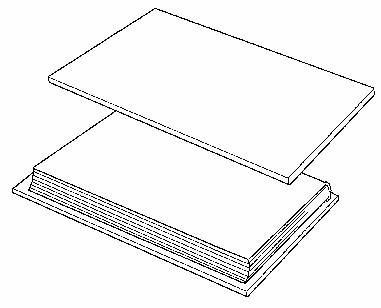 Fig. 14a |
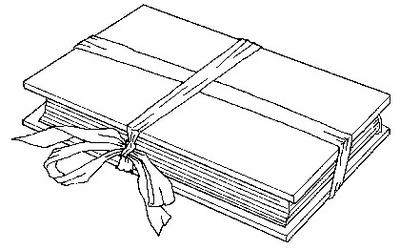 Fig. 14b |
Wrap with paper if the edges of the items are fragile or brittle. Groups of unbound materials linked to a single barcode may also be placed in phase boxes (Fig.11), document cases, or record storage boxes (Figs. 12-13).
MARKING ENCLOSURES
Barcodes are required for identification and tracking of materials stored in the Harvard Depository. If additional information must be included on an envelope or box, use an archival quality label, a #2 pencil, or a permanent pen with solvent-free ink. Do not use ballpoint or household-type felt-tip pens. The ink may fade or bleed in the presence of moisture.

